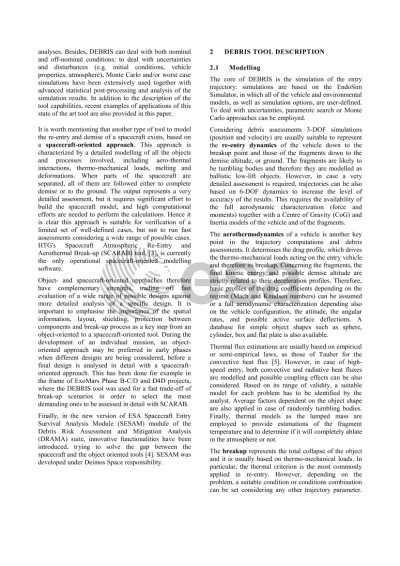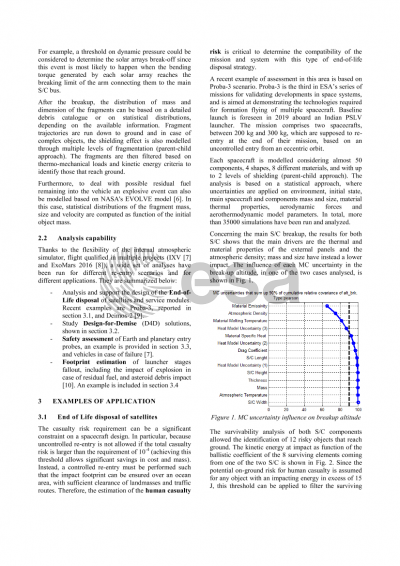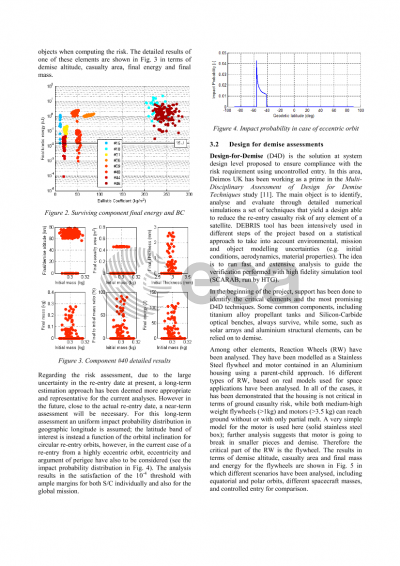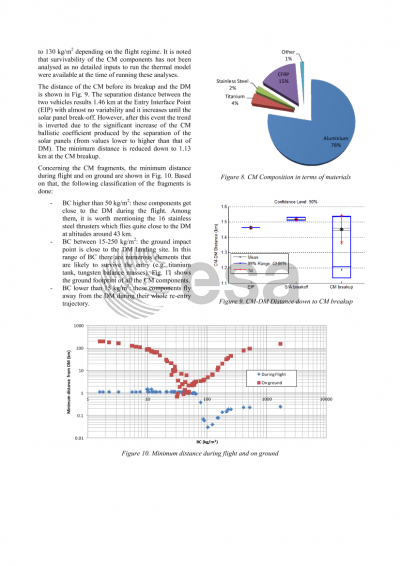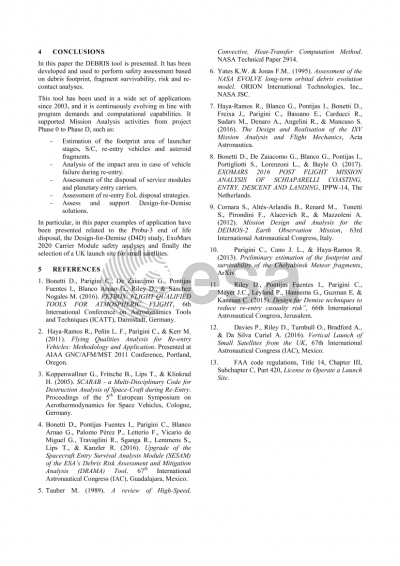Document details

Abstract
The analysis and simulation of the destruction of an object entering in the atmosphere is a complex and multi-disciplinary problem. Several factors as the entry conditions, the materials employed, the shape and the internal layout are involved, covering both mission and system design parameters. Uncertainties also play a key role and therefore reliable and efficient numerical simulation tools are needed to support the trade-offs, the definition and the selection of de-orbiting strategies, trajectory profiles, design-for-demise choices, and also for safety requirement verification.
In this paper we describe DEBRIS, the DEIMOS Space in-house tool, part of the Planetary Entry Toolbox. DEBRIS is an object oriented code based on engineering models that can be used to run fast safety assessments. The main outputs are the estimation of the impact area of the debris produced by a vehicle breakup, its survivability, short- and long- term risk assessments and re-contact analyses. Besides, DEBRIS can deal with both nominal and off-nominal conditions (selected worst cases and Monte Carlo simulations).
DEBRIS has been used in the frame of several ESA and non-ESA projects, from Phases 0 up to Phases D. Thanks to the flexibility of the internal atmospheric simulator (EndoSim, flight qualified in multiple projects), a wide set of analyses have been run for different re-entry scenarios, among others, demise, survivability and risk analyses of spacecrafts at their end of life, launcher stages fallout, footprints of re-entry vehicles in failure modes, risk of re-contact of planetary probes carriers, asteroids fragmentation and footprint, explosions of service modules. To deal with uncertainties and disturbances (e.g. initial conditions, vehicle properties, atmosphere, winds), Monte Carlo simulations have been extensively used together with advanced statistical post-processing and analysis of the simulation results. In addition to the description of the tool capabilities, recent examples of applications of this state of the art tool are also provided in this paper.
Preview

